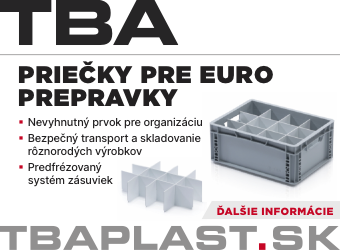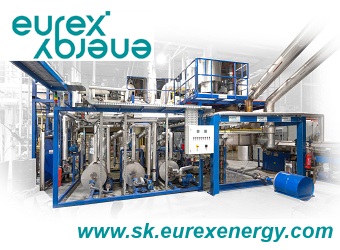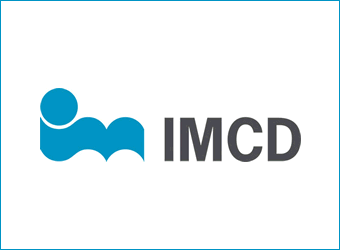Tržní ceny komoditních plastů týdně
Uvádíme zde tržní ceny různých typů komoditních plastů PE-LD, PE-HD, PP a PS ve střední a východní Evropě se zpožděním 5 týdnů. Údaje zpracoval náš partner myCEPPI.
Zajímají Vás aktuální ceny komoditních plastů? Objednejte si tuto službu Týdenní ceny komoditních plastů u nás v redakci.
Ceny na týden 8/2018
The following factors influenced “commodity” polymer prices and price expectations last week:
- BRENT oil price 64.84 USD/barrel, unchanged
- EUR/USD: 1.2406, getting stronger
- NAPHTHA: 549.66 USD/t, unchanged,
- Demand is getting dynamic
Spring has not arrived yet, but demand arrived on the polymer markets of Central Europe. With the exception of polyethylene grades demand is growing almost in case of every product. This is good news, but in Poland the strengthening demand is “overshadowed” by the significant oversupply, in the field of polyolefin grades in particular. Therefore distributors and traders offering materials imported from outside of Europe push prices down. European and Central-European producers offer their goods at a similar price level, yet the depressed price of products from Korea and Iran pull the price ranges wide. Therefore in Poland also European producers are forced to smaller (10-20 Euro) price corrections. This is not the case in other parts of Central-Europe, where we do not see price reduction, rather stable prices slightly increasing in case of polypropylene grades were typical. Polyethylene grades are still stagnating, and the growth of the demand is not spectacular. It is a big question for producers, how the weak PE business lasting for already 4-5 months is going to continue. In case of HDPE it is obvious that also plastic converters are aware of this, these are the relatively “lowest” prices this year. Therefore the demand for FILM and MDPE grades is high. Yet the supply is still abundant, prices have been stable in case of all 4 Central European HDPE producers for months. In this way pre-purchases are not typical either. A major wave of purchases is anticipated only in case of threatening, major monomer price increase. Yet chances for this are low. Oil prices returned from the 70 USD level and the price of NAPHTHA is below 550 USD again. In this way, from the feedstock side, there is no compelling force for the further increase of monomer prices. The concerns in February because of short propylene supply are already past tense. Seemingly there is sufficient propylene in North-America. In this way we expect normal propylene demand and supply by March. In this way no major monomer and ethylene price increase can be expected. This means that the balance of supply and demand will have the biggest impact on PE and PP prices in March. The spring season means always high demand between March and May. In Central-Europe we expect slightly increasing price trend in Central Europe, not only because of the increasing demand but also because of the European price differences. Prices in Western Europe are in many cases by 50-100 Euro higher than those in Central Europe.
PS market is also dynamic, with the exception of EPS. On temporary basis the quantity of cheap GPPS and HIPS imported from the Middle-East has dropped, therefore now two CE producers dominate the market. Their export to the Ukraine and Belorussia increased significantly. In this way there is a balance of supply and demand on the market. Because of the maintenance season that has just started, a further monomer price increase is probable, but the rate of the price increase is a question mark now. However, based on the experiences of the last year dramatic SM price increases exceeding 100-150 Euro cannot be excluded either. Due to this significant price volatility is the only thing which is sure on the market.
Polyolefin grades
LDPE supply is still broad. Polymer producers have got significant stocks. A shade of more dynamism is palpable now. In Poland there was a minor downward price correction due to the import. In this way the most frequent transaction prices were last week in a range of 1,150-1,190 Euro. Outside of Poland in Central-Europe the typical price range where deals are made was 1,180 – 1,210 €/t. The price increase by almost 20 Euro has stabilized. Of course major buyers could achieve also cheaper prices than this. In the southern region prices have moved a little bit upwards last week, the typical price range where deals were made in the southern region was 1,140-1,180 €.
The dynamism that started early February on the market of HDPE FILM grades endures. The typical price range was 1,080-1,160 € depending on the grade and producer. The demand for BM grades increased, the price range was 1,080-1,130 Euro. The Polish price level was by 20 € lower than this. The cheapest prices are still the simplest IM grades, in a range of 1,050-1,120 €.
The HDPE pipe (100) price range remained 1,390-1,480 € in February. The warehouses of converters are still full of feedstock, while finished product sales have not started yet.
LLDPE C4 prices are almost unchanged, we measured prices in a range of 1,120-1,180 €. We have measured the cheapest price (1,120 €) in the southern region and in Poland. But in the MCE region offers vary in a range of 1,140-1,180 €. Due to the strong Euro we expect no increase.
mLLDPE prices did not change last week, they were in a range of 1,260-1,330 €. Supply is broad, there are many producers being present on the CE market.
PPH market is more dynamic, came to be healthier. Now converters are confronted with the fact that unrealistic low prices below 1,100 € are not available for all. However in Poland, PPH Raffia imported from Iran is still available in a range of 1,060-1,100 Euro. Because of the strengthening of the Euro this difference compared to materials produced in Europe will probably remain. In the southern region prices started increasing, also the Serbian producer adjusted his prices to the market and last week increased the price of Raffia and IM grades as well by 20 €. Though the Romanian producer has got low prices, he is not able to supply. In Central-Europe the typical price range of PPH IM is 1,150-1,220 €, while the price range of raffia grades is 1,130-1,170 €/t.
In case of PPC demand is good and polymer producers expect a good demand for March as well. However in Poland there is a minor price correction by 10-20 € because of the low import prices. The price of PPC imported from South-Korea starts from 1,230 €. European producer prices vary in a range of 1,250-1,300 €. In the other parts of Central-Europe the typical price range is 1,280-1,310 €. In the meantime there are also offers about 1,250 € on the market. Offers originate from the European producer being present on the Polish market. All this might imply that slowly the equalization of Polish and Central-European prices has started.
On the PPR market the typical price range was 1,300-1,370 € last week. Demand is dynamic. The supply is balanced, slightly short.
The prices of the last week are presented in the table below (full truck load 20-22.5 t):
Grade name | Typical polymer price ranges in the second week of February, 2018, Central Europe (€/ton) |
HDPE BM | 1,060-1,160 |
HDPE Film | 1,060-1,180 |
HDPE IM | 1,050-1,160 |
HDPE Pipe (100) | 1,380-1,490 |
LDPE Film | 1,150-1,250 |
LDPE GP | 1,150-1,230 |
LLDPE C4 | 1,120-1,180 |
PPC | 1,250-1,320 |
PPH IM | 1,160-1,230 |
PPH Raffia | 1,140-1,220 |
PPR | 1,290-1,390 |
GPPS | 1,350-1,700 |
HIPS | 1,450-1,750 |
EPS | 1,680 -1,760 |
Polystyrene grades
The EPS market was very silent. Buyers have purchased what they needed for February. Because of the season start being far away feedstock warehouses run empty slowly. In this way demand is low. Because of the maintenance activities starting polymer producers do not force sales either. They build up reserves for early March, when we expect a major price increase (even by 3 digits) in case of SM and EPS.
Demand for GPPS, HIPS grades is good, mainly products from Europe are available. Import from Iran and Russia is now missing from the market. In this way the price scissor has closed, the typical GPPS trading price range was 1,450-1,650 € last week. HIPS was in a range of 1,500-1,680 €. The retention of import might be intentional on the side of importers, as last month their prices were detached from the market. One of the ways to restore, increase prices is to “come back” after a short absence. Importers will probably wait for the price increase in March and will adapt their prices accordingly.
| Typ | Cena |
|---|---|
| HDPE blow molding | 1104 € / t |
| HDPE film | 1113 € / t |
| HDPE injection molding | 1100 € / t |
| HDPE pipe (100) | 1421 € / t |
| LDPE film | 1187 € / t |
| LDPE general purpose | 1188 € / t |
| PP co-polymer injection molding | 1281 € / t |
| PP homo-polymer fiber | 1174 € / t |
| PP homo-polymer injection molding | 1180 € / t |
| PPR | 1330 € / t |
| GPPS | 1478 € / t |
| HIPS | 1598 € / t |
| EPS | 1695 € / t |
myCEPPI - nový přístup v poradenství a ve zpravodajství v oblasti plastů. Poskytneme Vám detailní, aktuální a na míru vytvořený obraz o trhu s plasty ve střední a východní Evropě.
Vycházíme z našich osobních a pevných vztahů s významnými hráči v plastikářském průmyslu ve střední a východní Evropě. Každý měsíc provádíme stovky osobních a telefonických hovorů se zpracovateli plastů, distributory a výrobci surovin, účastníme se odborných veletrhů a konferencí.
Informace, které shromažďujeme v rámci tohoto procesu, tvoří základ našich týdenních cenových reportů komoditních plastů. Obsahují také analýzu trhu. Tyto reporty také slouží jako výchozí bod pro naše další konzultační služby které poskytujeme společnostem, které potřebují pomoc při vstupu na trh, případně při rozšiřování svého byznysu, chtějí se orientovat v situací na trhu, atd. Naši odborníci mají desítky let zkušeností s plasty.
Rádi Vám poskytneme naše služby.
Historie cen
- 2024:
- 2023:
- 2022:
- 2021:
- 2020:
- 2019:
- 2018:
- 2017:
Nejnovější inzeráty
-
15.10.2024 | ID: 202419944
Top inzerát Koupím: PP homopolymer k recyklaci
20.11.2024 | ID: 202420101
Koupím: LDPE fólie k recyklaci
20.11.2024 | ID: 202420100
Spolupráce: Poptávka: PE-PP Špinavý zbytkový granulát z podlah
19.11.2024 | ID: 202420097
Koupím: Poptáváme plastové odpady PE
19.11.2024 | ID: 202420096
-
18.11.2024 | ID: 202420093
-
18.11.2024 | ID: 202420092
-
18.11.2024 | ID: 202420091
-
18.11.2024 | ID: 202420090
Koupím: PP homopolymer k recyklaci
20.11.2024 | ID: 202420101
Koupím: LDPE fólie k recyklaci
20.11.2024 | ID: 202420100
Koupím: Poptáváme plastové odpady PE
19.11.2024 | ID: 202420096
-
18.11.2024 | ID: 202420089
Koupím: Nezpracovaný materiál z výroby
18.11.2024 | ID: 202420081
-
18.11.2024 | ID: 202420078
-
16.11.2024 | ID: 202420076
Koupím: Nezpracovaný materiál z výroby
11.11.2024 | ID: 202420053
-
11.11.2024 | ID: 202420043
-
15.10.2024 | ID: 202419944
Top inzerát -
18.11.2024 | ID: 202420093
-
18.11.2024 | ID: 202420092
-
18.11.2024 | ID: 202420091
-
18.11.2024 | ID: 202420090
Prodám: PP-COPO bílý regranulát
18.11.2024 | ID: 202420088
-
18.11.2024 | ID: 202420087
Prodám: HDPE regranulát - natur/bílá
18.11.2024 | ID: 202420086
Prodám: HDPE regranulát - natur
18.11.2024 | ID: 202420085
Nejbližší výstavy a semináře
25.11.2024 - 28.11.2024 | Erbil
26.11.2024 - 29.11.2024 | Shenzhen
28.11.2024 - 30.11.2024 | Riga
04.12.2024 - 07.12.2024 | Istanbul
Plastics Recycling Show India 2024
04.12.2024 - 06.12.2024 | Mumbai
13.12.2024 - 16.12.2024 | Yangon
07.01.2025 - 09.01.2025 | Düsseldorf
World Future Energy Summit 2025
14.01.2025 - 16.01.2025 | Abu Dhabi
22.01.2025 - 23.01.2025 | Paríž
19.11.2024
Plastic, Printing & Packaging, Africa 2024
20.11.2024
Plastics & Rubber Indonesia 2024
20.11.2024
25.11.2024
26.11.2024
19.11.2024
Školení - Technologie vstřikování I.
21.11.2024
Školení - Technologie vstřikování II.
25.11.2024
27.11.2024
Temperace vstřikovacích forem, organizovaná společností PLASTSIM s.r.o.
28.11.2024
Nabídky práce
Obchodně - technický zástupce profesionálního nářadí - celá ČR - ant s.r.o.
20.11.2024
Obchodně technický zástupce společnosti LIFOCOLOR s.r.o.
11.11.2024
Pracovník výroby Brno - LIFOCOLOR, s.r.o.
06.11.2024
Obchodně - technický zástupce, západní Slovensko - Wermaly s.r.o.
05.11.2024
Operátor výroby - kontrola plastových výrobků - ESOX-PLAST s.r.o.
30.10.2024
Disponent logistiky pro plastové výlisky - JASPLASTIK-SK spol. s r.o.
30.10.2024
Seřizovač - seřizovač vstřikolisů - Plasted spol.s r.o.
14.10.2024
Nastavovač - AIS Automotive Interior Systems Slovakia s.r.o.
11.10.2024
Pořadač vstřikolisů junior - Nanogate Slovakia s.r.o.
09.10.2024
Plastikářský slovník







